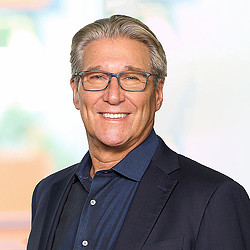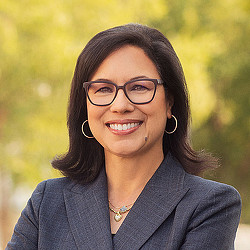Decarbonizing the Built Environment for a More Sustainable Future
April 15, 2024 | By Andy Cohen and Diane Hoskins
Editor’s Note: The following excerpt is from Design for a Radically Changing World, by Gensler Global Co-Chairs Diane Hoskins and Andy Cohen.
Extreme weather events have become a persistent part of the daily lives of many of the world’s residents. Coastal flooding, extreme heat, rampant wildfires, supersized storms, megadroughts, and myriad other ecological, zoological, health, and economic risks are increasingly becoming a certainty. The trends have been studied, and the temperatures have been recorded. The world has already witnessed the ice caps melting and the Great Coral Reef being bleached by warming ocean waters.
The reality and consequences of climate change have been known to scientists and environmentalist for decades, even generations — but only in more recent years has the public caught up to its reality, and its severity.
For those of us in the real estate and design sector, a focus on sustainability and resilience has been embedded in our work for years — but too often, concerns over cost have outweighed concerns about carbon footprint. Progress has been too slow, and our industry’s contribution to carbon emissions too often goes unrecognized. The built environment is responsible for some 40% of all global carbon emissions, more than the impacts of automobiles or industry. This is a significant number — even larger than the impact of transportation and industry. The automotive sector has already created a path to decarbonization; in our own field, we must similarly take ownership of decarbonizing our work. Carbon emissions from the built environment can be considered in two distinct categories: operational carbon, resulting from the day-to-day power needs of a building; and embodied carbon.
Operating carbon accounts for 72% of a building’s overall energy consumption. Increasing the efficiency of building systems — from lighting and refrigeration to heating, cooling, and more — can significantly lower the energy used per square foot. Design elements like shading, operable windows, and passive cooling can support and even drive building efficiency. Much of the design industry’s focus on sustainability has historically centered on this issue, and progress has been made — from more efficient systems and design solutions to on-site renewable energy and renewable energy grids.

To tackle embodied carbon, which accounts for the other 28% of building emissions, we must zoom out to evaluate the whole life cycle of building materials. The structure of many commercial buildings is a good place to start. Cement, used in concrete, accounts for nearly 10% of all carbon emissions worldwide; and steel, another commonly used material, is nearly as carbon intensive. Mostly because of the level of heat used to produce them, the annual carbon emissions of each are equivalent to those of whole countries. Wood, on the other hand, has relatively low embodied energy — as much as five times less than steel — and has the added benefit of sequestering carbon while the trees grow. Mass timber elements are quickly becoming a popular sustainable alternative to traditional materials.
The opportunity to reduce embodied carbon emissions extends past a building’s structure: the interior elements that designers specify, from carpet to drywall to furnishings, which may be replaced many times over a building’s life span, are just as important. By acting quickly and working with our industry partners to develop and promote lower embodied energy materials, we can catalyze a low-carbon marketplace and move toward a more sustainable future.
Many stakeholders are part of the real estate world, including architects, designers, owners, developers, investors, contractors, and material suppliers. With coordinated action, together we can prevent billions of tons of CO2 from entering the atmosphere. We must come together to drive demand for global net zero building standards across major markets. Policies must also change, requiring energy suppliers to provide access to low-carbon alternatives. Using innovative technology, systems, and materials can help propel real and meaningful climate action.
For media inquiries, email .


